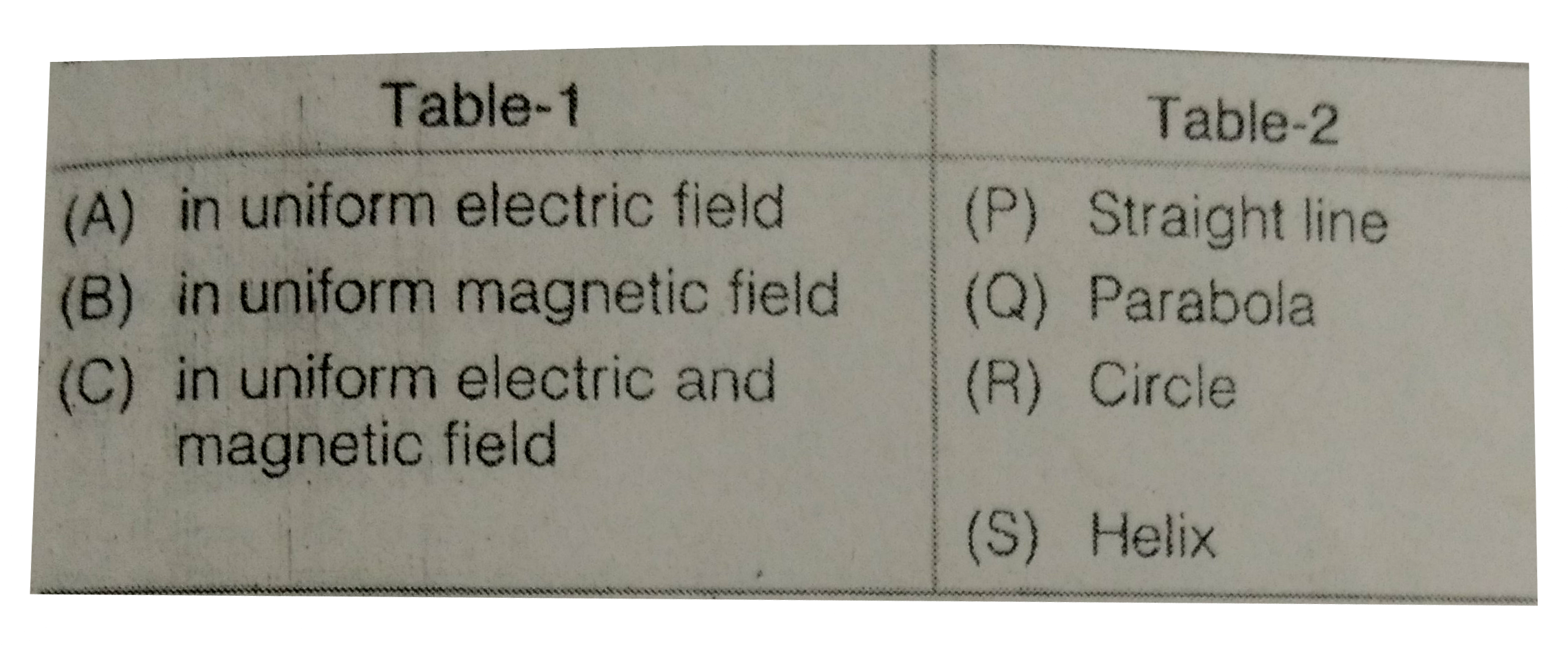Text Solution
Verified by Experts
The correct Answer is:
Topper's Solved these Questions
MAGNETIC EFFECT OF CURRENT AND MAGNETISM
DC PANDEY|Exercise Integer type Questions|10 VideosMAGNETIC EFFECT OF CURRENT AND MAGNETISM
DC PANDEY|Exercise Comprehension type Questions|16 VideosLAWS OF THERMODYNAMICS
DC PANDEY|Exercise Level 2 Subjective|18 VideosMEASUREMENT AND ERRORS
DC PANDEY|Exercise Subjective|19 Videos
Similar Questions
Explore conceptually related problems
Knowledge Check
DC PANDEY-MAGNETIC EFFECT OF CURRENT AND MAGNETISM-Matrix Matching type Questions
- For the path of a charged particle math the following.
Text Solution
|
- In magnetic field B=(2hati+3hatj) T, velocity of a charged particle is...
Text Solution
|
- In magnetic field, for a charged particle (in motion) match the follow...
Text Solution
|
- A charged particle is moving in a circular path in uniform magnetic fi...
Text Solution
|
- An inifinitely long wire bent at 90^(@) at point O shown in figure. Ma...
Text Solution
|
- Match the following.
Text Solution
|
- Equal currents I flow in two wires along x and y ax as shown. Match th...
Text Solution
|
- A current carrying wire is as shown in figure. An electron from point ...
Text Solution
|
- There are four situations given in Table-1 involving a magnetic dipole...
Text Solution
|
- Some current carrying wires are given in Table-1 and graph of variatio...
Text Solution
|
- Magnetic field exists in a space and given as B=-(B(0))/(a)yhatK, wher...
Text Solution
|
